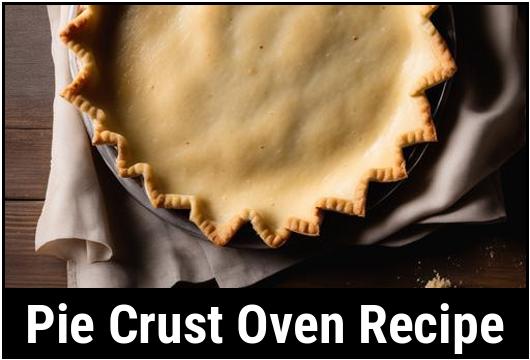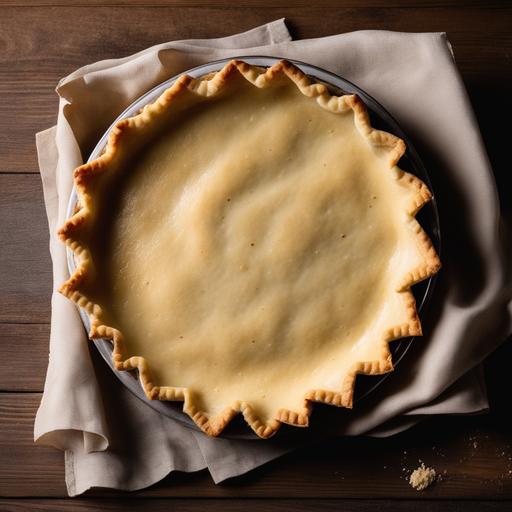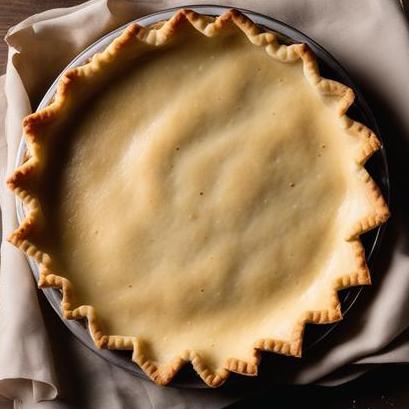
How To Make A Flaky Pie Crust: The Ultimate Oven Recipe
As winter rolls around, there are few things more comforting than the smell of freshly made pie wafting through your home. Whether it’s a classic apple pie, a savory quiche, or a decadent chocolate tart, there’s a reason why pie has been a staple of our diets for centuries.
But let’s be honest- the real star of any good pie is the crust. A perfect pie crust should be flaky, buttery, and tender all at once- a delicate balance that can seem unattainable to the average baker. Fear not, however- with a bit of patience and a lot of practice, anyone can learn to make a truly great pie crust.
In this comprehensive guide, we’ll cover everything you need to know about making a pie crust in the oven- from food science to recipe variations. So dust off your rolling pin, preheat your oven, and get ready to bake the pie of your dreams.
Food Science of Pie Crust
Before we dive into the recipe nitty-gritty, let’s take a moment to understand what makes a great pie crust so…great. Every pie crust consists of three main components: flour, fat, and liquid.
-
Flour: The star of any pie crust, flour provides the structure of the crust. Specifically, the protein in flour (known as gluten) forms long strands that give the dough elasticity. This is why we knead pie dough- to create long gluten strands for a tender texture.
-
Fat: Fat is responsible for the flakiness of a good pie crust. When heated in the oven, the fat- whether butter, lard, shortening, or oil- creates air pockets between the dough layers. This is why a high-fat crust results in more flakiness.
-
Liquid: The liquid in a pie crust- usually ice water- hydrates the flour and helps to bind the ingredients together. Too much liquid can result in a tough crust, however.
With these three ingredients in mind, let’s move on to the actual recipe.
Selecting Your Ingredients
The beauty of a pie crust is in its simplicity- with just a few ingredients, you can create something truly beautiful. That said, it’s important to select high-quality ingredients to ensure the best outcome.
Flour
For the best results, use flour with a high protein content- around 12-13%. All-purpose flour is perfectly fine for most pies, but for a particularly flaky crust, you can use cake flour or pastry flour (which is lower in protein).
Fat
Use butter, lard, or a combination of both for the richest, flakiest crust. Margarine and vegetable oil can be used in a pinch, but they lack the flavor and texture of high-quality fats.
Liquid
Ice water is the way to go here- the chilliness of the water helps to keep the fat solid, which leads to a more flaky crust. Some recipes call for vinegar or alcohol instead of water, but this is a matter of personal preference.
Cleaning and Preparing Your Kitchen

Before beginning the recipe, it’s important to ensure that your kitchen is clean and ready for baking. This means cleaning all surfaces- counters, cutting boards, utensils, and bowls- to prevent cross-contamination.
It’s also important to preheat your oven before starting the recipe- a hot oven is crucial for proper baking.
Tips for Perfect Pie Crust
Making a pie crust is a bit of an art form, but these tips will help you get closer to perfection:
-
Begin with cold ingredients. Cold butter and ice water help to create tender, flaky crusts.
-
Don’t overwork the dough. After mixing the ingredients, only knead the dough until it just comes together. Overworking can lead to tough dough.
-
Chill the dough properly. After forming the dough into a disc, wrap it tightly in plastic wrap and refrigerate for at least an hour. This helps to relax the gluten and prevents shrinking during baking.
-
Don’t forget to use pie weights. Blind-baking (baking the crust without filling) requires the use of pie weights to prevent the crust from puffing up.
Variations on the Classic Recipe

While a classic all-butter pie crust is hard to beat, there are plenty of variations to try. Here are a few ideas:
-
Add sugar and spices for a sweet crust (great for fruit pies).
-
Use half butter/half lard for an even flakier crust.
-
Mix in some grated cheese or herbs for a savory crust.
-
Swap out some of the flour for coarse cornmeal for a crunchy texture.
-
Replace some of the butter with cream cheese for an ultra-tender crust.
Doneness Checks
The key to knowing when your pie crust is done is all in the color. A perfectly cooked pie crust should be golden brown- not too pale, but not burnt. Keep an eye on the crust during baking, and adjust the temperature (or cover the edges with foil) if it looks like it’s browning too quickly.
Recipe: Classic All-Butter Pie Crust
Now that you understand the science and technique behind pie crusts, here’s a recipe for a classic all-butter crust, perfect for any type of pie.
Ingredients:
-
2 ½ cups all-purpose flour
-
1 tsp salt
-
1 tbsp sugar (if making a sweet pie)
-
1 cup (2 sticks) unsalted butter, cold and cut into small pieces
-
5-7 tbsp ice water
Instructions:
-
In a large bowl, whisk together the flour, salt, and sugar (if using).
-
Add the butter to the bowl and, using a pastry blender or your fingers, work the butter into the flour until it resembles coarse meal.
-
Drizzle the ice water over the mixture, one tablespoon at a time, and toss with a fork until the dough starts to come together.
-
Using your hands, gather the dough into a ball and shape into a disc. Wrap tightly in plastic wrap and refrigerate for at least an hour.
-
When ready to use, roll out the dough on a floured surface to the desired thickness and shape. Transfer to a pie dish and follow your recipe’s instructions for filling and baking.
Conclusion
There you have it- everything you need to know about making a perfect pie crust in the oven. While it can take some practice to get it right, the end result is worth the effort. So next time you’re in the mood for a bit of baking, whip up a homemade pie crust and bask in the deliciousness.
Sources
FAQS On Pie Crust Oven Recipe
What Ingredients Do I Need To Make A Pie Crust In The Oven?
To make a pie crust in the oven, you will need the following ingredients: 2 ½ cups of all-purpose flour, 1 teaspoon of salt, 1 teaspoon of sugar, 1 cup of unsalted butter (cold and cut into small cubes), and ¼ to ½ cup of ice water.
How Do I Make A Pie Crust In The Oven From Scratch?
Follow these steps to make a pie crust in the oven from scratch:
- In a large mixing bowl, whisk together the flour, salt, and sugar until well combined.
- Add the cold cubed butter to the flour mixture and use a pastry cutter or your fingertips to cut the butter into the flour until the mixture resembles coarse crumbs.
- Gradually add the ice water, 1 tablespoon at a time, and mix the dough with a fork or your hands until it just comes together.
- Divide the dough into two equal portions and shape each portion into a disk. Wrap each disk tightly in plastic wrap and refrigerate for at least 1 hour, or overnight.
- Preheat your oven to the desired temperature as instructed in your pie recipe.
- Once chilled, roll out one disk of the dough on a lightly floured surface until it fits the size of your pie dish. Carefully transfer the rolled out dough to the pie dish.
- Trim any excess dough hanging over the edges of the dish and crimp the edges, if desired.
- Fill the pie crust with your desired filling and bake according to your pie recipe’s instructions.
How Long Should I Prebake My Pie Crust In The Oven?
The prebaking time for a pie crust in the oven may vary depending on the recipe. Generally, you should prebake the crust for about 10-15 minutes at 375°F (190°C) or until the edges turn golden brown. It is important to follow the specific instructions provided in your pie recipe for accurate prebaking time.
How Do I Prevent My Pie Crust From Becoming Soggy In The Oven?
To prevent your pie crust from becoming soggy, you can use a technique called blind baking. After rolling out the dough and fitting it into the pie dish, prick the bottom of the crust with a fork. Line the crust with parchment paper or aluminum foil and fill it with pie weights or dried beans. Bake the crust in a preheated oven for about 10 minutes. Then, carefully remove the parchment paper/foil and weights/beans and continue baking as instructed in your recipe. This step helps the crust to firm up and prevents it from absorbing excessive moisture from the pie filling.
Can I Freeze My Pie Crust Dough Before Baking It In The Oven?
Yes, you can freeze your pie crust dough before baking. After shaping the dough into disks, wrap them tightly in plastic wrap and place them in a freezer-safe bag. The dough can be frozen for up to 3 months. When ready to use, thaw the dough in the refrigerator overnight. Then, follow the rolling and baking instructions specific to your recipe. Freezing the dough is a convenient option for future use or when making pie crusts in advance.


